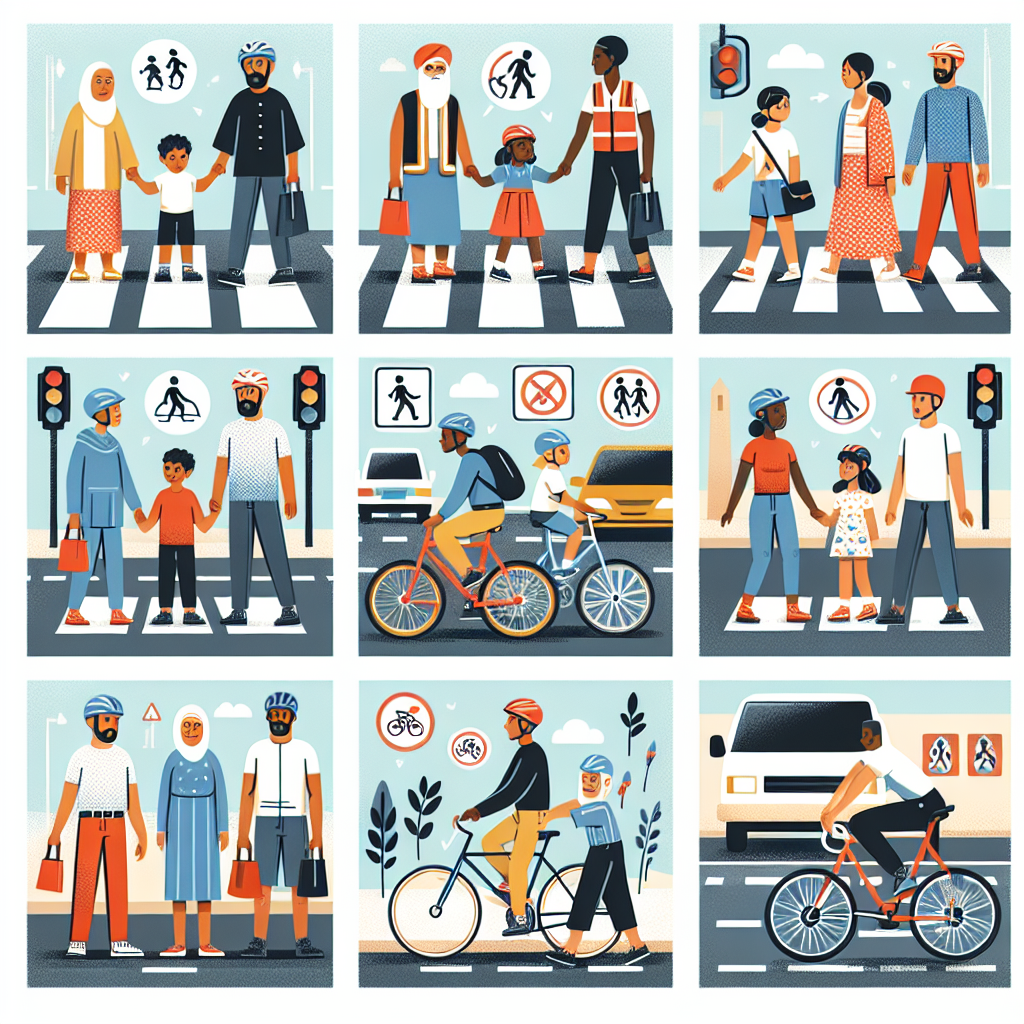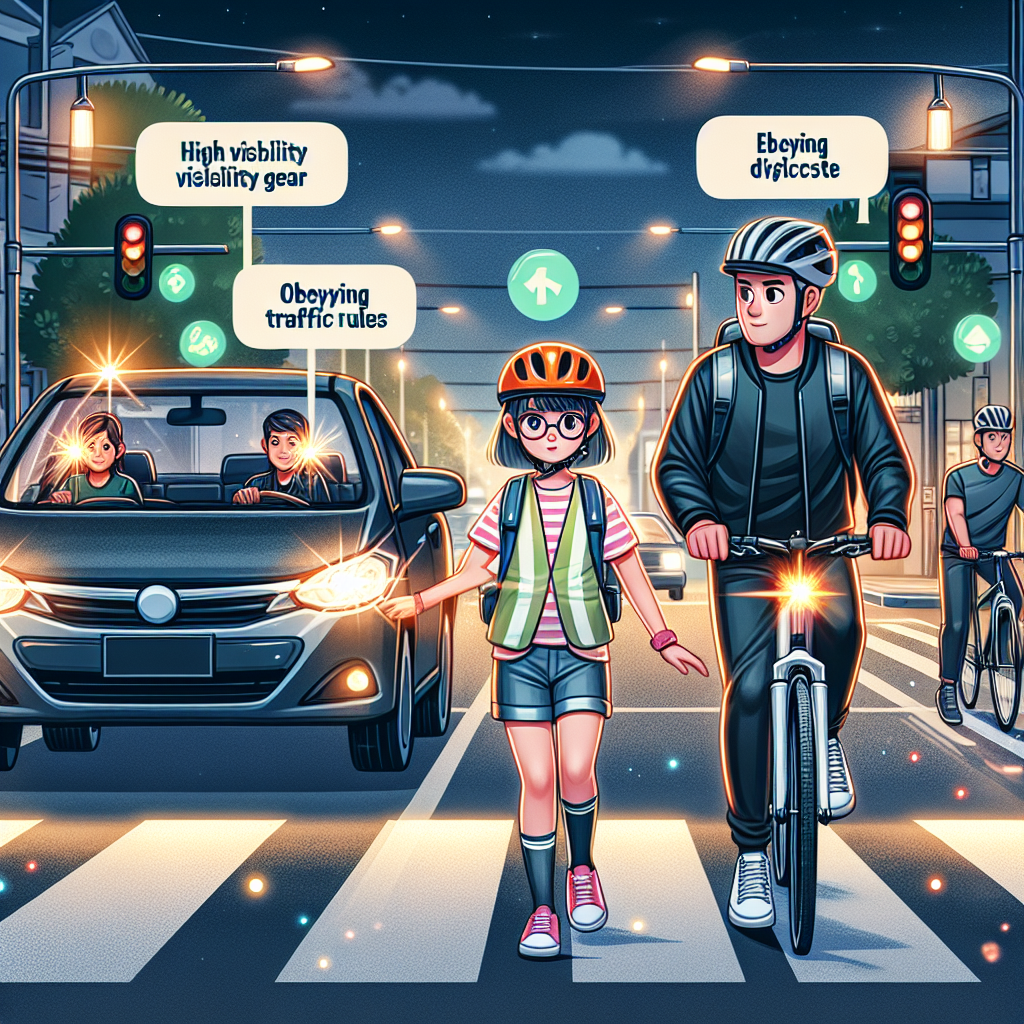-
Table of Contents
- Road Safety for Pedestrians and Cyclists: Tips for Staying Safe on the Roads
- Importance of Road Safety for Pedestrians and Cyclists
- Visibility: A Key Factor in Road Safety
- Interacting with Vehicles: Safety Tips
- Case Studies and Statistics
- Case Study 1: The Netherlands
- Case Study 2: New York City
- Summary
Road Safety for Pedestrians and Cyclists: Tips for Staying Safe on the Roads

With the increasing number of vehicles on the roads, it is crucial for pedestrians and cyclists to prioritize their safety. Whether you are walking or cycling, being aware of potential risks and taking necessary precautions can significantly reduce the chances of accidents and injuries. In this article, we will provide valuable advice on how pedestrians and cyclists can stay safe on the roads, including tips for visibility and interacting with vehicles.
Importance of Road Safety for Pedestrians and Cyclists
Road safety is a critical concern for pedestrians and cyclists due to their vulnerability in comparison to motor vehicles. According to the World Health Organization (WHO), approximately 1.35 million people die each year as a result of road traffic crashes, with pedestrians and cyclists accounting for a significant portion of these fatalities. Therefore, it is essential to understand the potential risks and take proactive measures to ensure personal safety.
Visibility: A Key Factor in Road Safety
One of the most crucial aspects of road safety for pedestrians and cyclists is visibility. Being visible to drivers can help prevent accidents and ensure that motorists are aware of your presence on the road. Here are some tips to enhance visibility:
- Wear bright and reflective clothing: Wearing bright colors, especially during low-light conditions, can significantly increase your visibility. Additionally, consider wearing reflective accessories such as vests, armbands, or ankle bands to make yourself more noticeable to drivers.
- Use lights and reflectors: When cycling at night or in low-light conditions, it is essential to have proper lighting on your bicycle. Install front and rear lights, as well as reflectors, to make yourself visible from all angles.
- Make eye contact with drivers: When crossing the road or approaching an intersection, try to establish eye contact with drivers. This ensures that they have seen you and are aware of your presence.
Interacting with Vehicles: Safety Tips
Interacting with vehicles on the road requires caution and adherence to certain safety guidelines. Here are some tips to help pedestrians and cyclists stay safe:
- Follow traffic rules: Pedestrians should use designated crosswalks and obey traffic signals. Cyclists should ride in the same direction as traffic and follow all traffic rules, including stopping at red lights and stop signs.
- Be cautious at intersections: Intersections can be particularly dangerous for pedestrians and cyclists. Always look both ways before crossing, even if you have the right of way. Be aware of turning vehicles and make sure they have seen you before proceeding.
- Stay alert and avoid distractions: It is crucial to stay focused and avoid distractions such as using mobile phones or listening to loud music while walking or cycling. Being aware of your surroundings can help you react quickly to potential hazards.
- Use hand signals: Cyclists should use hand signals to indicate their intentions to drivers. Signaling turns and stops in advance allows motorists to anticipate your movements and adjust their driving accordingly.
- Stay visible during turns: When turning, whether as a pedestrian or cyclist, make sure to check for oncoming traffic and signal your intention clearly. Maintain a visible position on the road to ensure that drivers can see you.
Case Studies and Statistics
Examining real-life examples and statistics can provide valuable insights into the importance of road safety for pedestrians and cyclists:
Case Study 1: The Netherlands
The Netherlands is known for its excellent cycling infrastructure and high levels of road safety for cyclists. According to the Dutch Ministry of Infrastructure and Water Management, the country has implemented various measures to ensure the safety of cyclists, including separate cycling paths, traffic-calming measures, and strict liability laws. As a result, the Netherlands has one of the lowest cyclist fatality rates in the world.
Case Study 2: New York City
New York City has made significant efforts to improve road safety for pedestrians and cyclists in recent years. The implementation of protected bike lanes, pedestrian plazas, and reduced speed limits has resulted in a decrease in traffic fatalities. According to the New York City Department of Transportation, pedestrian fatalities decreased by 32% between 2013 and 2019, while cyclist fatalities decreased by 63% during the same period.
Summary
Ensuring road safety for pedestrians and cyclists is of utmost importance to reduce accidents and fatalities. By prioritizing visibility through the use of bright clothing, lights, and reflectors, pedestrians and cyclists can significantly enhance their safety on the roads. Additionally, following traffic rules, being cautious at intersections, staying alert, and using hand signals are essential practices for interacting with vehicles safely. Real-life case studies from countries like the Netherlands and cities like New York City demonstrate the positive impact of implementing road safety measures. By adopting these tips and taking proactive measures, pedestrians and cyclists can contribute to a safer road environment for everyone.



